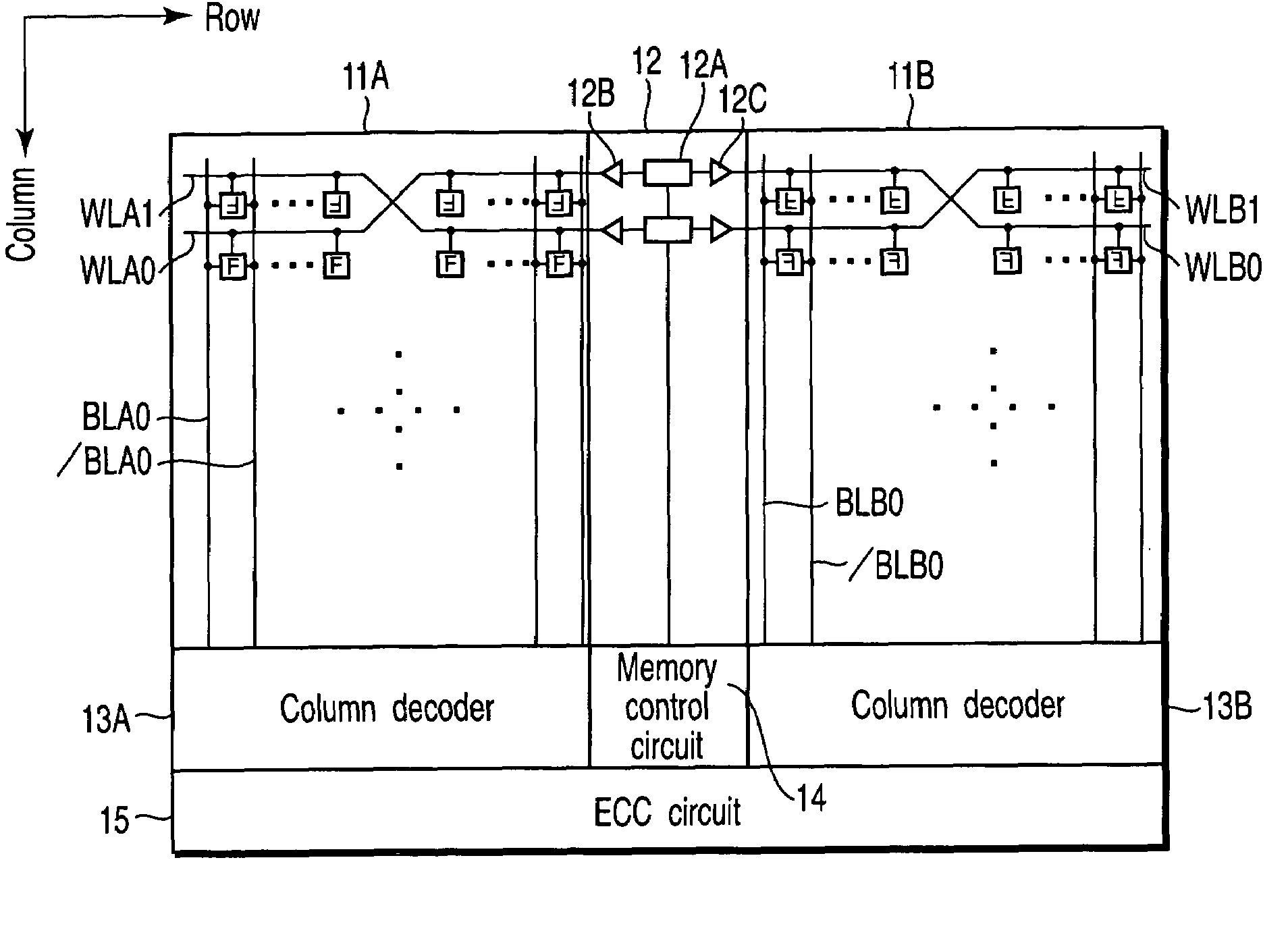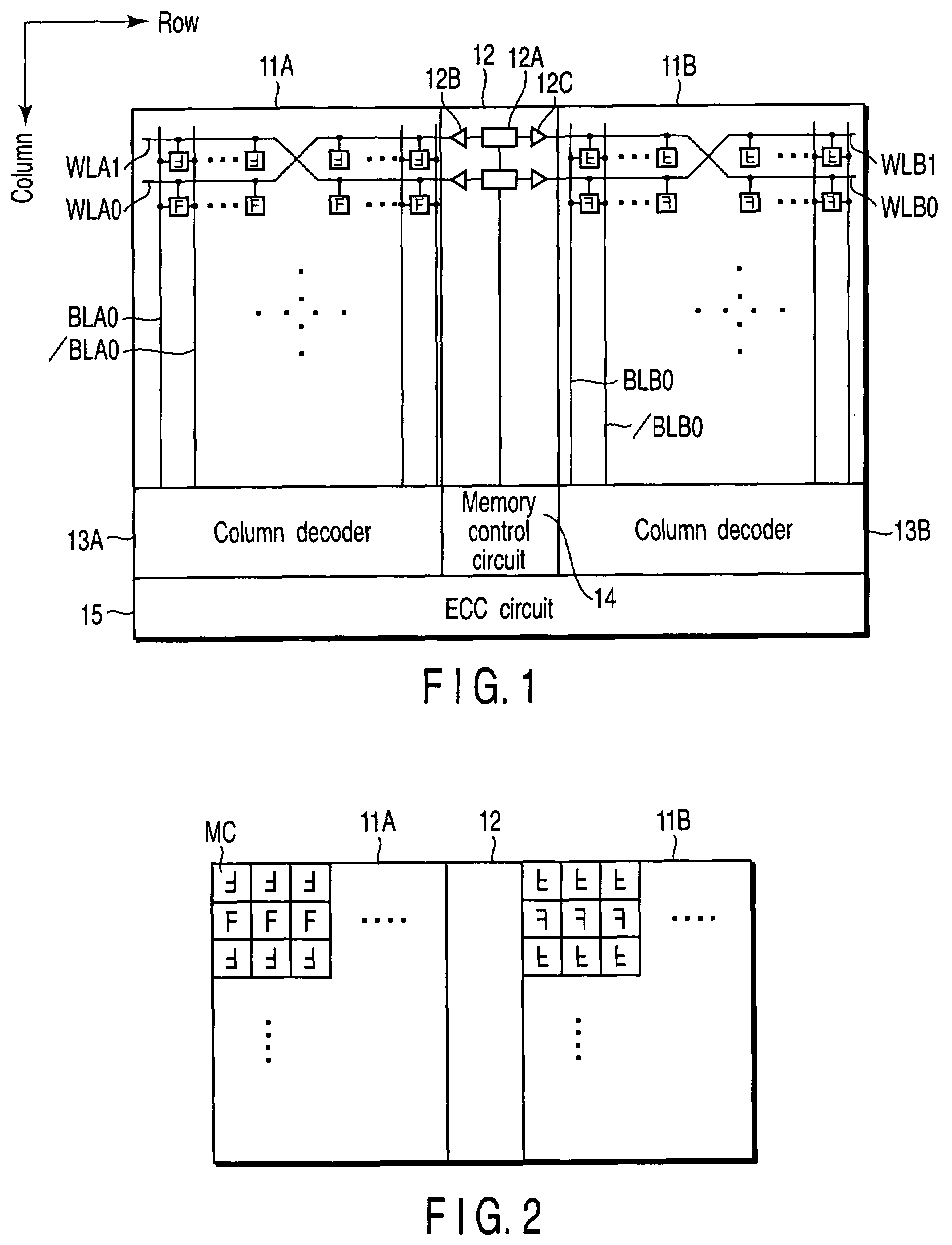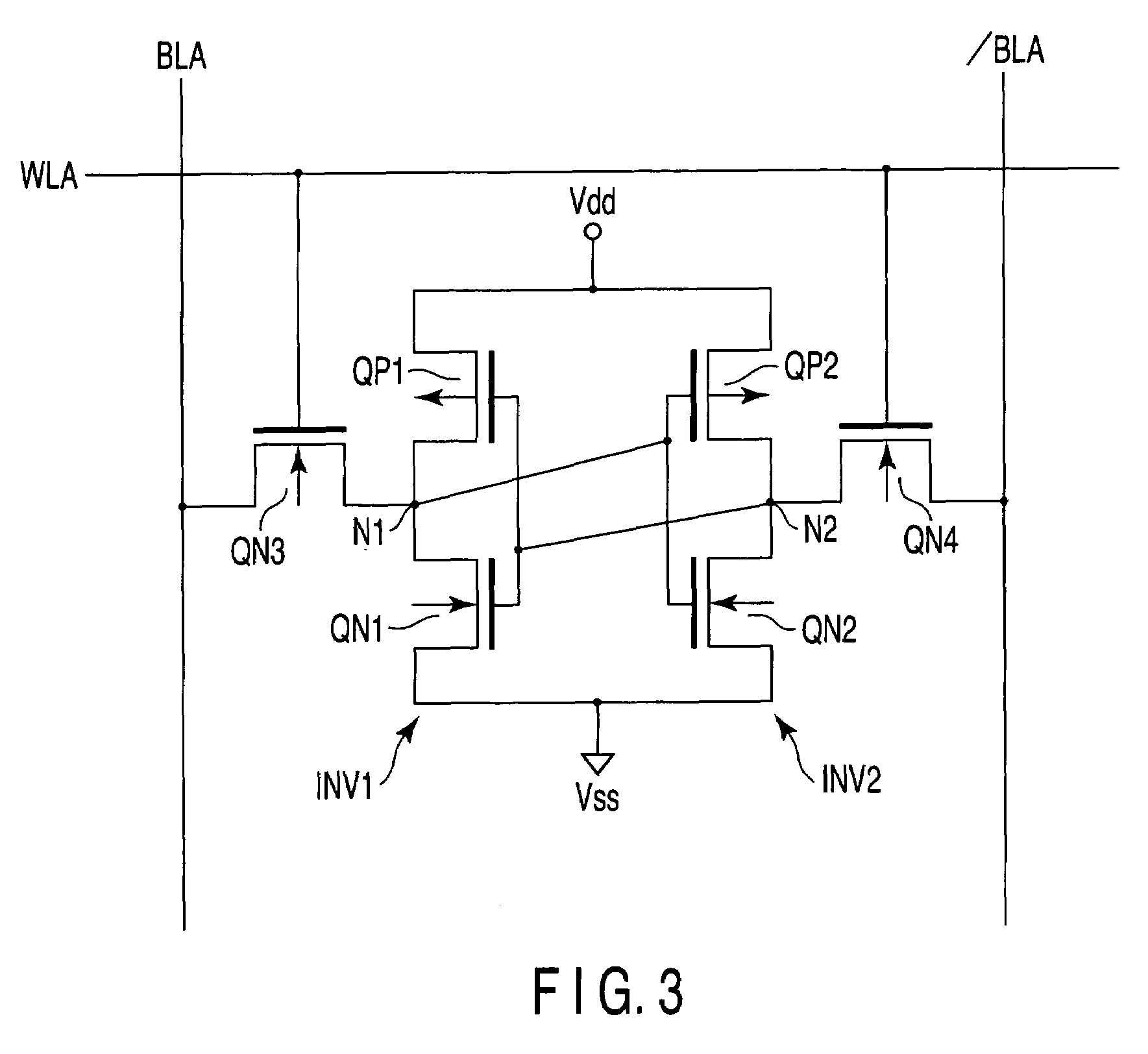Semiconductor memory device having an error correcting code circuit
a memory device and error correction technology, applied in error detection/correction, digital storage, instruments, etc., can solve problems such as soft errors, operating voltage, and static random access memory (sram) to pose problems
- Summary
- Abstract
- Description
- Claims
- Application Information
AI Technical Summary
Benefits of technology
Problems solved by technology
Method used
Image
Examples
first embodiment
(First Embodiment)
[0025]FIG. 1 is a block diagram showing the arrangement of a semiconductor memory device according to the first embodiment of the present invention. The semiconductor memory device comprises, e.g., two memory cell arrays 11A and 11B. A plurality of word lines WLA0 to WLAn running in the row direction are arranged in the memory cell array 11A. Additionally, a plurality of bit line pairs BLA0 to BLAm and / BLA0 to / BLAm running in the column direction are arranged in the memory cell array 11A.
[0026]A plurality of word lines WLB0 to WLBn running in the row direction are arranged in the memory cell array 11B. Additionally, a plurality of bit line pairs BLB0 to BLBm and / BLB0 to / BLBm running in the column direction are arranged in the memory cell array 11B.
[0027]A row decoder (row selection circuit) 12 is arranged between the memory cell array 11A and the memory cell array 11B. The row decoder 12 is connected to word lines WLA and WLB and selects the rows of the memory ...
second embodiment
(Second Embodiment)
[0067]In the second embodiment, the progress of the row address signal is changed between a memory cell array 21A and a memory cell array 21B.
[0068]FIG. 5 is a block diagram showing the arrangement of a semiconductor memory device according to the second embodiment of the present invention. Each of the memory cell arrays 21A and 21B includes a plurality of memory cells MC arranged in a matrix.
[0069]A row decoder 24 is arranged between the memory cell array 21A and the memory cell array 21B. The row decoder 24 is connected to word lines WLA and WLB and selects the rows of the memory cell arrays 21A and 21B.
[0070]The row decoder 24 comprises a plurality of output circuits 24C and 24D corresponding to the plurality of word lines. The output circuit 24C is connected to the word line WLA. The output circuit 24D is connected to the word line WLB.
[0071]A sense amplifier circuit (SA) 22A is arranged adjacent to a column decoder 13A. Data read out from the memory cell MC t...
third embodiment
(Third Embodiment)
[0092]In the third embodiment, the progress of the column address signal is changed between a memory cell array 21A and a memory cell array 21B.
[0093]FIG. 7 is a block diagram showing the arrangement of a semiconductor memory device according to the third embodiment of the present invention. Each of the memory cell arrays 21A and 21B includes a plurality of memory cells MC arranged in a matrix.
[0094]A row decoder 12 is arranged between the memory cell array 21A and the memory cell array 21B. The row decoder 12 is connected to word lines WLA and WLB and selects the rows of the memory cell arrays 21A and 21B.
[0095]A column decoder 31A is arranged at the column-direction end of the memory cell array 21A. The column decoder 31A is connected to a plurality of bit line pairs BLA0 to BLAm and / BLA0 to / BLAm. The column decoder 31A selects a column of the memory cell array 21A on the basis of a column address signal.
[0096]A column decoder 31B is arranged at the column-dire...
PUM
 Login to View More
Login to View More Abstract
Description
Claims
Application Information
 Login to View More
Login to View More - R&D
- Intellectual Property
- Life Sciences
- Materials
- Tech Scout
- Unparalleled Data Quality
- Higher Quality Content
- 60% Fewer Hallucinations
Browse by: Latest US Patents, China's latest patents, Technical Efficacy Thesaurus, Application Domain, Technology Topic, Popular Technical Reports.
© 2025 PatSnap. All rights reserved.Legal|Privacy policy|Modern Slavery Act Transparency Statement|Sitemap|About US| Contact US: help@patsnap.com



